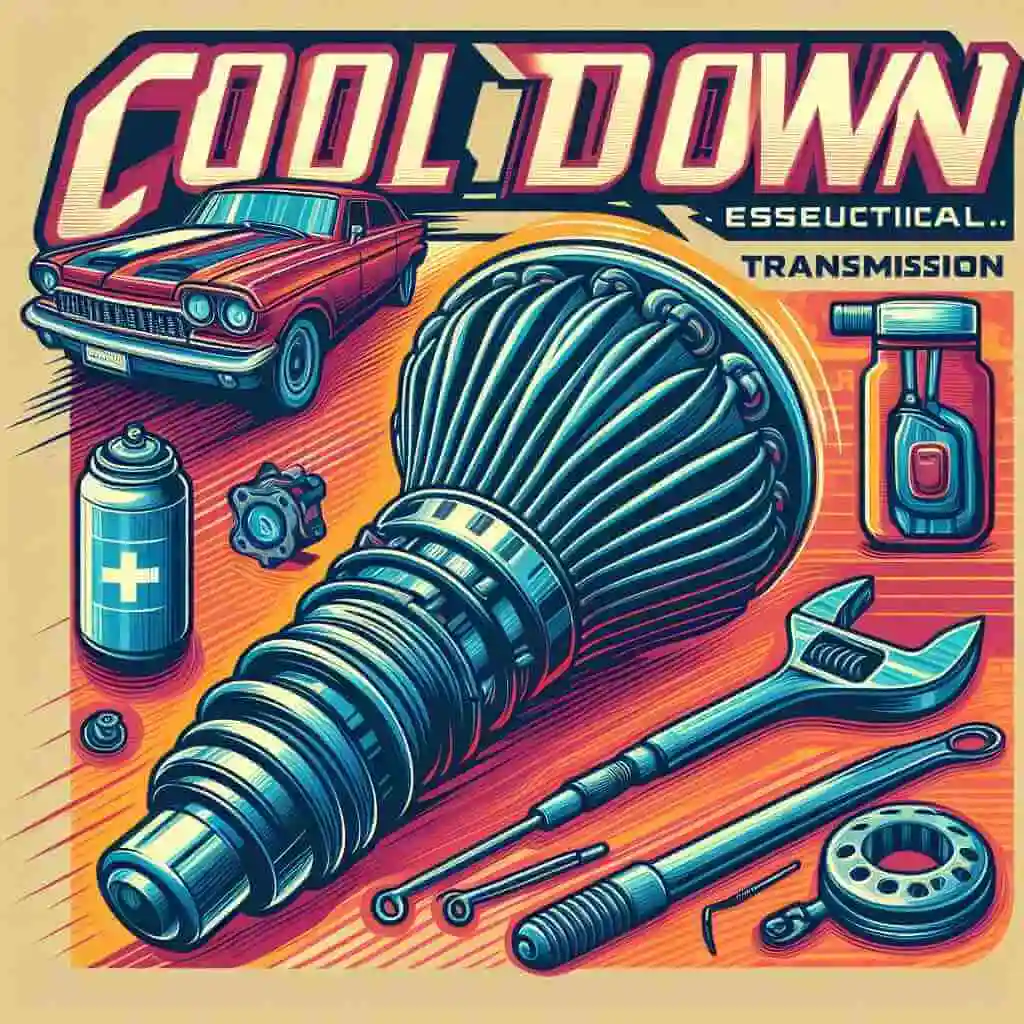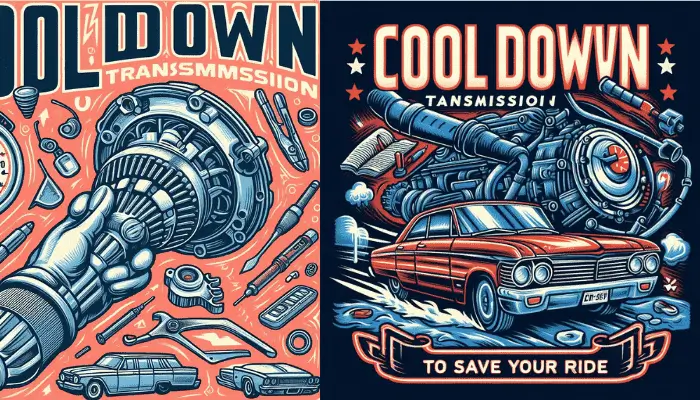As a maintenance engineer, I understand the importance of keeping complex systems running smoothly. When a car’s transmission overheats, it’s crucial to act fast to prevent costly damage.
Whether you’re a seasoned mechanic, a DIY enthusiast, or simply concerned about your vehicle’s health, knowing how to cool down a transmission fast is an essential skill.
Let’s explore the causes of overheating, what to do in the moment, and how to prevent future problems.
Key Takeaways
- An overheated transmission can lead to costly damage – act fast!
- If your transmission overheats, pull over immediately and let it cool.
- Check fluid levels, look for leaks, and consider adding an auxiliary cooler.
- Regular transmission maintenance is the best way to prevent overheating.
Why Does My Transmission Overheat?
Your car’s transmission is a complex system of gears, clutches, and fluids responsible for transferring power from the engine to the wheels. Like any mechanical part, it generates heat through friction. Here’s why transmissions can overheat:
- Heavy Loads and Demanding Conditions: Towing, hauling, frequent stop-and-go traffic, and driving uphill put extra strain on your transmission.
- Low or Degraded Transmission Fluid: This vital fluid lubricates and cools the transmission. Low levels or old, burnt fluid reduce its effectiveness.
- Worn Internal Components: Over time, clutches, gears, and bearings inside the transmission wear out, generating more heat and causing long-term damage.
- Problems with the Cooling System: The radiator and cooling fans help regulate transmission temperature. Malfunctions here can cause overheating.
What to Do if Your Transmission Overheats Right Now
If you suspect your transmission is overheating, act quickly to prevent significant damage. Here’s the immediate action plan:
- Pull Over Safely: Find a safe place to stop as soon as possible. Don’t continue driving, as this can worsen the problem substantially.
- Turn Off the Engine: Allow the engine and transmission to cool down.
- Open the Hood: This helps dissipate heat more quickly.
- Caution: Do Not Touch Hot Parts: Wait at least 30 minutes before checking anything under the hood. Transmission components can become extremely hot.
How to Diagnose Transmission Overheating Issues
Once the transmission has cooled sufficiently, some basic troubleshooting will help pinpoint the problem:
Check Transmission Fluid:
- Locate the dipstick: Refer to your owner’s manual for guidance.
- Check the level: Low fluid is a common cause of overheating.
- Assess the condition: Fluid should be reddish in color. Dark, discolored, or burnt-smelling fluid indicates a serious need for service.
- Look for Leaks: Check under your car for drips or puddles of transmission fluid. Look around the transmission pan, seals, and cooler lines. Visible leaks require immediate attention.
- Inspect the External Cooler (If Equipped): Check for damage, blockages, or debris restricting airflow.
- When to Call a Mechanic: If you see obvious leaks, severely degraded fluid, or suspect internal damage, getting professional help is crucial. Some warning signs include:
- Grinding noises
- Difficulty shifting
- Burning smells persisting after cooldown

Stop Your Transmission from Overheating Again
Preventing future overheating is all about good maintenance and considerate driving habits:
Transmission Fluid Maintenance: Follow your manufacturer’s recommended service intervals for fluid changes and filter replacements.
Driving Tips:
- Limit towing and hauling: If you do tow frequently, use appropriate gear selection and consider an auxiliary cooler.
- Ease up in demanding conditions: Avoid rapid acceleration and hard braking in hot weather or mountainous terrain.
- Consider an Auxiliary Transmission Cooler: This addition is particularly beneficial if you tow, live in a hot climate, or do demanding driving.
- Monitor Your Transmission: Some vehicles have temperature gauges. Pay attention to any unusual readings or persistent warning lights.
Table: Transmission Fluid Change Recommendations
| Vehicle Type | Recommended Change Interval |
|---|---|
| Passenger Car (Normal Driving) | Every 50,000 – 100,000 miles |
| Truck or SUV (Heavy Use) | Every 30,000 – 50,000 miles |
How to cool down transmission fast (automatic)
If your automatic transmission overheats, follow these steps:
- Find a Safe Place to Pull Over: Immediately find a safe spot to stop on the side of the road. Turn on your hazard lights.
- Turn Off the Engine: This allows your engine and transmission to start cooling down.
- Open the Hood: Be careful, as components will be hot. This helps dissipate heat faster.
- Wait: Give the transmission at least 30 minutes to cool down. Longer may be necessary depending on how hot it was.
- Check Fluid (If Cooled): Only do this if sufficiently cooled. Refer to your car’s manual. Low fluid is a common cause of overheating. Look for leaks too.
- Seek Assistance: If you’re unsure, see obvious damage, or the problem persists after a cooldown, it’s best to call a mechanic or towing service.
Transmission overheating symptoms
Be alert for these common warning signs:
- Dashboard Warning Lights: A transmission temperature light or check engine light.
- Burning Smell: Acrid, burnt odor coming from the engine area.
- Sluggish Shifting: Difficulty changing gears, delays, or harsh shifting.
- Unusual Noises: Whining, grinding, or buzzing from the transmission.
- Reduced Power: Your car may feel unresponsive or lose power.
Advanced Troubleshooting
If basic checks don’t reveal the cause of your transmission overheating, further investigation may be required:
Failing Torque Converter: This component transfers power from the engine to the transmission using fluid. Symptoms of a failing torque converter include:
Internal Transmission Wear: Clutches, bands, and other components within the transmission can wear down over time. This often requires professional diagnosis and repair, potentially involving a transmission rebuild.
Radiator and Cooling System Malfunctions: The radiator helps dissipate heat from both the engine and transmission. Problems like leaks, a bad thermostat, or a faulty cooling fan can contribute to transmission overheating.

Table: Warning Signs of a Failing Torque Converter
| Symptom | Description |
|---|---|
| Shuddering | Vibration felt under acceleration |
| Slipping | Engine RPMs increase without corresponding speed increase |
| Difficulty Shifting | Delayed shifting, reluctance to shift, or harsh gear changes |
| Strange Noises | Whining, grinding, or buzzing sounds from the transmission |
Protecting Your Transmission: The Power of Prevention
By taking proactive measures, you can significantly reduce the chances of dealing with an overheated transmission in the future. Here are the key strategies:
Stay on Top of Maintenance: Regular transmission fluid services are your best defense. Consult your owner’s manual or visit a trusted mechanic for specific intervals related to your car.
Upgrade Your Cooling System: If you regularly tow, drive in hot climates, or encounter challenging driving conditions, an auxiliary transmission cooler is a worthwhile investment.
Listen to Your Car: Pay attention to unusual noises, smells, or changes in how your car shifts. These early warning signs can help catch issues before they become expensive problems.
Frequently Asked Questions (FAQs)
Can I drive short distances with an overheated transmission?
It’s highly inadvisable. Even short distances can cause further damage. It’s best to let your transmission cool completely and seek diagnosis before driving again.
How long does it take for a transmission to cool down?
This depends on several factors, including how hot it was, ambient temperature, and whether the engine is running. A safe estimate is at least 30 minutes, but it could take longer.
Does adding transmission fluid help cool it?
Adding fluid only helps if the initial overheating was caused by low fluid levels. If there’s another underlying issue, simply adding fluid won’t solve the problem.
How to cool down transmission fast (Chevy)?
Overheating Chevy transmission? Pull over, turn off the engine, and try this: pop the trunk (some models have extra fans to boost cooling!). If the problem persists, call a mechanic.
